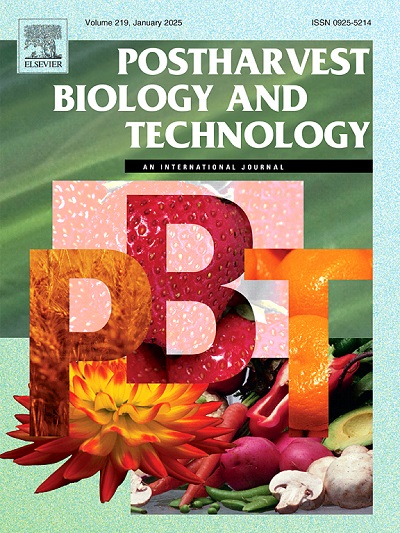Comparative analysis in postharvest storability, quality attributes, antioxidant activity, and disease defense systems in ‘Fuyan’ and ‘Dongbi’ longans during storage
IF 6.4
1区 农林科学
Q1 AGRONOMY
引用次数: 0
Abstract
This research aimed to compare the fruit storability and quality differences between the ‘Fuyan’ and ‘Dongbi’ varieties of longan (Dimocarpus longan Lour.) by assaying their antioxidant system and disease defense systems. The results showed that, compared to ‘Fuyan’ fruit, during storage, ‘Dongbi’ fruit exhibited superior storability and appearance, characterized by lower levels of fruit disease, pulp breakdown, pericarp browning, and weight loss, alongside higher pericarp color, brightness, pigments, pulp nutrient content, and commercial acceptability of fruit. Additionally, ‘Dongbi’ longans exhibited lower ROS accumulation and MDA level, higher levels of antioxidants (AsA, GSH), antioxidant enzymes (SOD, CAT, APX), reducing power, and DPPH• scavenging ability. Besides, ‘Dongbi’ longans retained higher levels of secondary metabolites (lignin, total phenolics, flavonoid), PRMEs (PAL, C4H, 4-CL, CAD, POD), and PRs (CHI, GLU). Therefore, the enhanced storage stability of ‘Dongbi’ longans may be attributed to the synergistic effects of an improved antioxidant system, phenylpropanoid pathway, and PRs.
求助全文
约1分钟内获得全文
求助全文
来源期刊

Postharvest Biology and Technology
农林科学-农艺学
CiteScore
12.00
自引率
11.40%
发文量
309
审稿时长
38 days
期刊介绍:
The journal is devoted exclusively to the publication of original papers, review articles and frontiers articles on biological and technological postharvest research. This includes the areas of postharvest storage, treatments and underpinning mechanisms, quality evaluation, packaging, handling and distribution of fresh horticultural crops including fruit, vegetables, flowers and nuts, but excluding grains, seeds and forages.
Papers reporting novel insights from fundamental and interdisciplinary research will be particularly encouraged. These disciplines include systems biology, bioinformatics, entomology, plant physiology, plant pathology, (bio)chemistry, engineering, modelling, and technologies for nondestructive testing.
Manuscripts on fresh food crops that will be further processed after postharvest storage, or on food processes beyond refrigeration, packaging and minimal processing will not be considered.
 求助内容:
求助内容: 应助结果提醒方式:
应助结果提醒方式:


